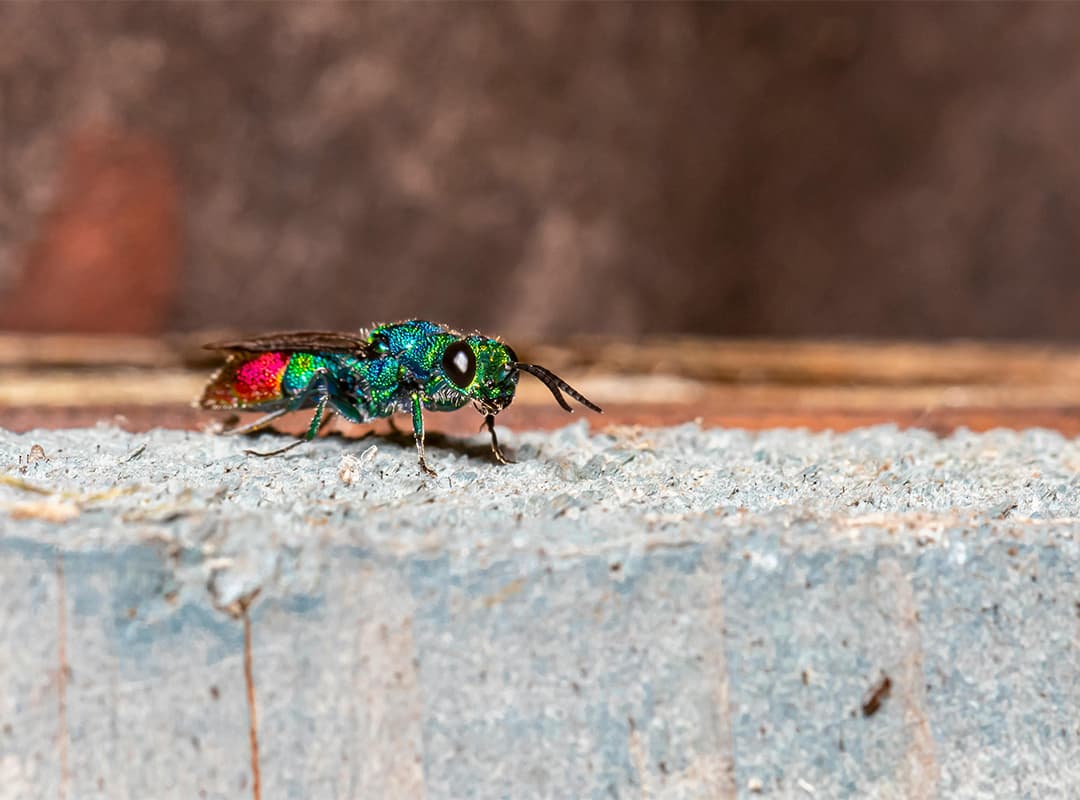Biological control of pests is one of the key methods of sustainable agriculture, aiming to reduce dependence on chemical pesticides and preserve the natural balance in ecosystems. Parasitoid wasps play an important role in this process through their ability to control insect pest populations. In recent decades, chemical ecology, the science that studies the interaction of organisms through chemical signals, has uncovered many aspects of parasitoid wasp behavior, leading to improved methods for their use in biological control. In this article, we examine how knowledge of the chemical ecology of parasitoid wasps is being applied to effective pest management.
The role of chemical signals in the behavior of parasitoid wasps
Parasitoid wasps use a wide range of chemical signals to find hosts, coordinate their actions, and defend themselves against predators. These signals can include pheromones secreted by the wasps themselves or allomones, chemicals produced by plants or host insects. Understanding these signals helps scientists and agronomists to better manage the search and eradication of pests.
Host search and identification
One of the most critical stages in the life of a parasitoid wasp is finding a suitable host to lay its eggs. Many wasps target chemical signals released by plants damaged by insect pests. For example, when a caterpillar feeds on the leaves of a plant, the plant begins to release specific volatile substances that attract parasitoid wasps. These chemical signals help the wasps detect and attack the pests, even before they cause serious damage to the plants.
Research has shown that modifying agricultural plants to enhance their chemical signals can significantly increase the effectiveness of attracting parasitoid wasps, making biological control more effective. For example, genetically modified plants that emit stronger pheromones or allomones can attract more wasps, reducing pest populations in fields.
Improved colonization and wasp efficiency
The use of chemical signals also helps to improve wasp colonization in new areas. One example is the use of synthetic pheromones to attract wasps to certain areas of agricultural land. These substances can be sprayed on fields to create conditions favorable for wasp colonization. Thus, instead of mass release of wasps into the environment, which can be costly and is not always successful, natural mechanisms can be effectively utilized, ensuring a sustainable presence of wasps in the right places.
Communication between wasps and plants
Chemical ecology has also revealed that plants can ‘communicate’ with wasps through chemical signals. This process, known as triotrophic communication, involves three levels: plant, pest and parasitoid. Plants attacked by pests release specific substances that attract parasitoid wasps. These substances not only signal the presence of the pest, but can also alter wasp behavior, encouraging wasps to more actively seek out and attack their hosts.
Some research suggests that plant breeders can use this knowledge to develop new plant varieties that more effectively attract parasitoid wasps. This could greatly reduce the need for chemical pesticides and reduce the negative environmental impact of agriculture.
Synthetic pheromones and their applications
In recent years, scientists have started to actively develop synthetic analogs of natural pheromones of parasitoid wasps. These substances can be used in agriculture to increase the number of wasps in fields and improve their effectiveness in pest control. For example, synthetic pheromones can be used to attract wasps to areas where there is a high concentration of pests, allowing efforts to be focused on the most problematic areas.
Synthetic pheromones can also be used to control wasp reproduction. For example, they can be used to increase the number of females, which helps to control pest populations more effectively. These methods show how knowledge of chemical ecology can be used to improve the effectiveness of biological control.
The chemical ecology of parasitoid wasps is breaking new ground in biological control of pests, offering sustainable and environmentally friendly methods for managing pest populations. The use of pheromones and other chemical signals allows for more precise targeting of wasps, improving their colonization and increasing the overall effectiveness of biological control. With advances in science and technology, these methods will become increasingly important for sustainable agriculture and ecosystem conservation.
